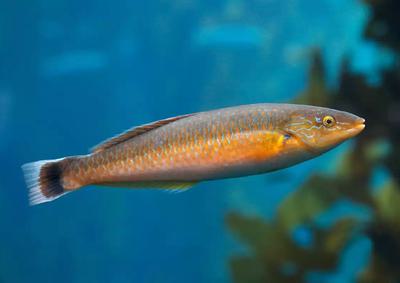Tropical señorita fish, like this one, colonized waters off the coast of central California during a prolonged ocean heat wave known as the Blob. Monterey Bay Aquarium
Six years on, a prolonged ocean heat wave known as the Blob has altered the makeup of marine life off the coast of California, new research shows.
The Blob, a large mass of unusually warm waters in the northeast Pacific, lasted from 2013 to 2017. The heat wave drew tropical fish further north. After the Blob dissipated, many of these creatures returned home, but a few have stuck around, according to surveys of protected areas along the California coast.
Large numbers of slender, orange señorita fish have colonized the central coast, Joshua Smith, of the Monterey Bay Aquarium, told Hakai. California has also seen a surge of sea urchins and blue rockfish. Other species, such as ocean whitefish and California sheephead, which could be found off Southern California before the Blob, are now far more abundant.
Even after the heat wave subsided, these “changes in community structure persisted, especially in the kelp forest, shallow reef, and deep reef habitats,” said the study, which was published in the journal Global Ocean Change.
“I’m starting to sort of question whether those communities will ever look the way they did,” said Smith, lead author of the study.
Warming waters around the world are spurring fish to move to higher latitudes. Now, as the Pacific enters its warmer El Niño phase, the seas are seeing unprecedented heat. Since April, global ocean temperatures have hit a record high every single month — and by a wide margin.



